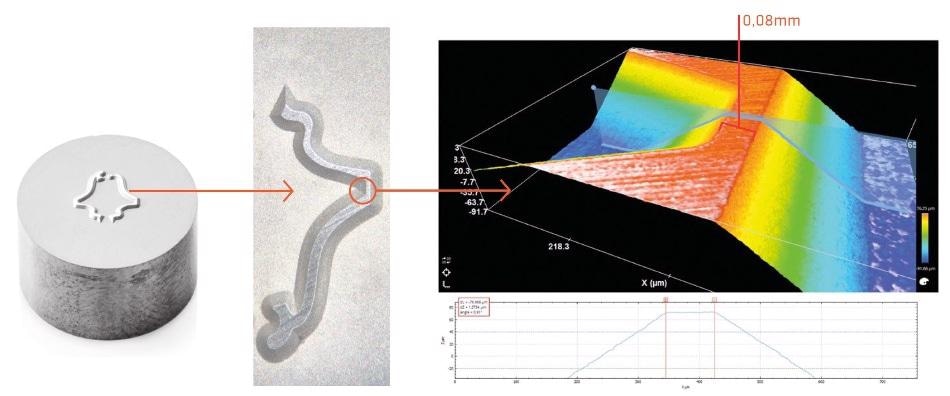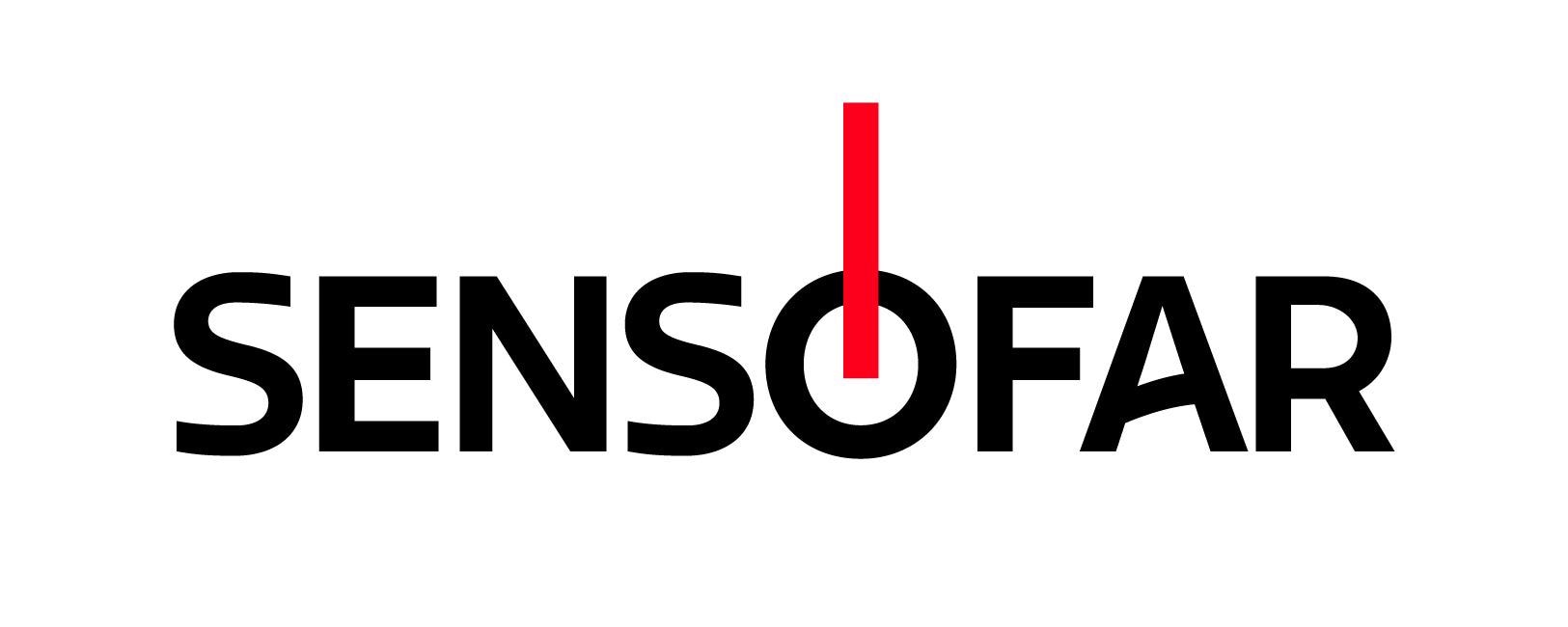Until 2016, it was impossible to incorporate a femtosecond laser—an ultra-short pulse duration laser—onto a 5-axis machine. This was first realized by the Swiss group Georg Fischer in 2016, thereby becoming global pioneers in this technology. This development introduced a new range of opportunities for manufacturing processes.
The ultra-short pulse duration laser has two major merits over traditional technologies and/or other lasers: (1) Burr-free micro-milling. There are almost no thermal impacts over the part. The outcome is a clean and sharp micro-milling, with very sharp edges and high-quality surface finishing. (2) As it is a “cold laser,” it is possible to etch on any material, including plastic, sapphires, ceramics, glass, steel, aluminum, and so on.
It is an ideal technology to be employed on functional texturing and micro-milling. In 2016, when Microrelleus invested in a femtosecond laser machine with 5 axis, the measurement demands had changed. They required a technology to study and measure at the micro- and nano-scale for functional texturing. Everything had to be carried out rapidly and with high accuracy.
Measurements
Laser Micro-Milling
This technology is ideal for producing microfluidic channels, microcavities in the mold, micro-milling for hard metal tool or tempered steel tool, and so on. Sensofar’s technology with the 5x and 20x objectives enabled each and every micro-milling project to be tested rapidly and efficiently with the user-friendly acquisition and analysis software.
Thanks to Sensofar’s exceptional potential to integrate Confocal and Focus Variation techniques, transparent materials like PMMA or glass could also be imaged. This innovative technology is known as Confocal Fusion and it combines the information from both the technologies into the same topography without affecting acquisition time. Sensofar’s software algorithms are optimized to select the best acquisition data for each pixel. Therefore, high slope angles can be measured with a low magnification objective on highly reflective surfaces in confocal mode, which are typical features found on laser-textured surfaces.

Figure 1. Micro-milling over hard-metal tool and focus variation microscope analysis.
Functional Texturing
Functional texture refers to the optimization of functionality to the component due to the micro- or nano-structures developed over the material or over the mold of the plastic part. That functionality can be superhydrophilicity, superhydrophobicity, friction reduction, light diffraction, antibacterial, and more.
As this is a new and complicated process, care must be taken to ensure that the sizes are perfect when the shape is created both at the micro- and nano-scale.
The Sensofar’s profiler in confocal mode with 100x magnification enables nano-structures to be analyzed over micro-structures due to its exceptional lateral resolution. That is something that cannot be achieved with other manufacturer’s focus variation microscopes, which is a crucial necessity for optimal texture functionality.

Figure 2. Confocal microscope analysis of the micro- and nano-texture created for superhydrophobic purposes.

Figure 3. Confocal microscope analysis of the nano texture created for light diffraction purposes.
Conclusions
Sensofar’s confocal and focus variation technologies are a successful combination of techniques for the analysis of micro-milling and functional texturing over any material, in the micro- as well as nano-scale. Rapid and non-destructive measurements can be acquired to ensure the following:
- Micro-millings are offered within the correct tolerance
- Functional texturing operates properly based on the developed texture

This information has been sourced, reviewed and adapted from materials provided by Sensofar.
For more information on this source, please visit Sensofar Metrology.